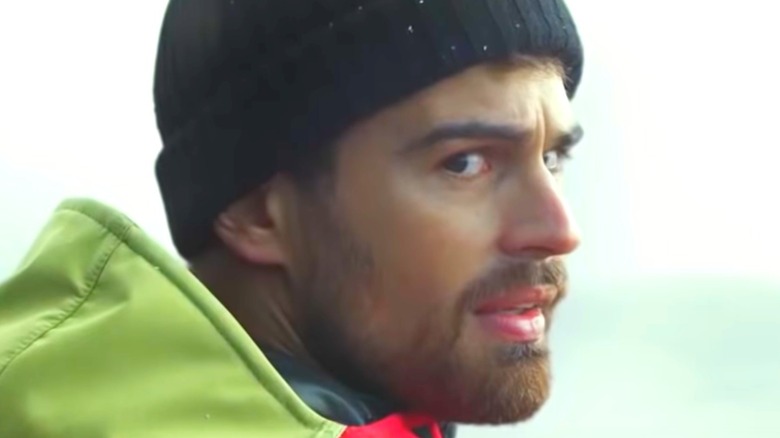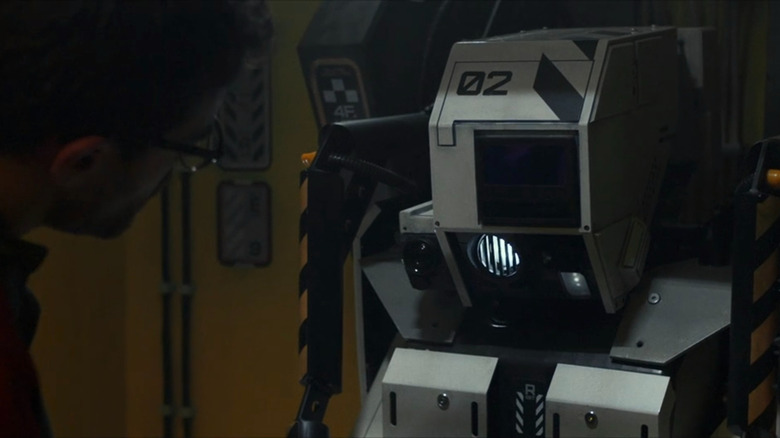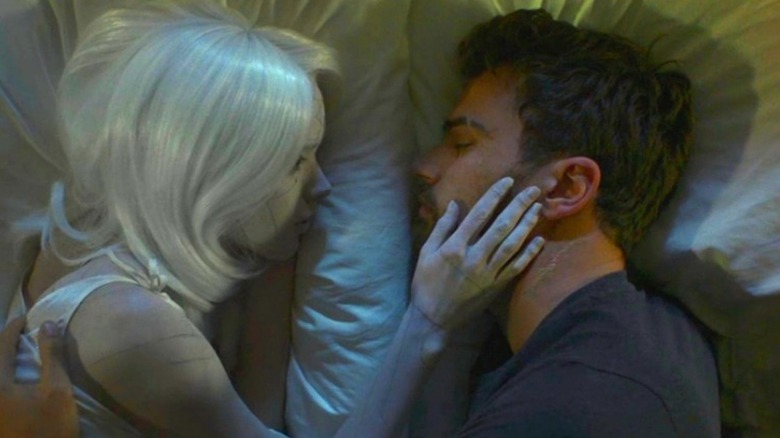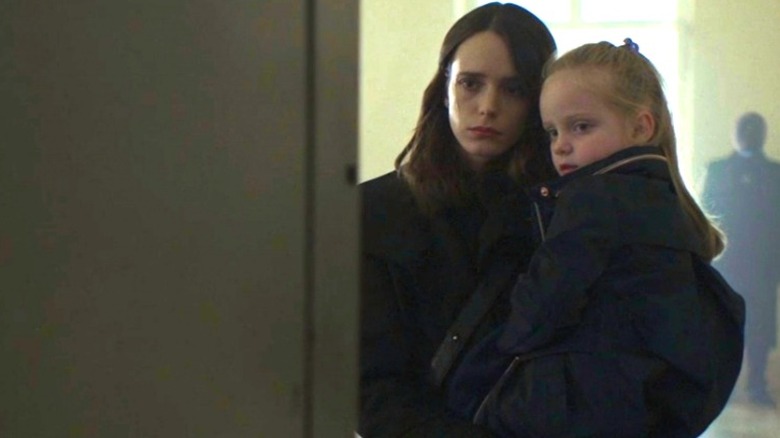The Ending Of Archive Explained
Cracking down on what makes effective science fiction is a tricky task. Finding a good balance of intriguing ideas and emotionally engaging storytelling is a hard one to make work. But when sci-fi works, really works. Case in point: The 2020 film "Archive," the directorial debut of Gavin Rothery.
The film tells the story of George Almore (Theo James of "Underworld" and "Divergent"), a scientist who is working on perfecting a true human equivalent AI. However, his true goal — to use the AI to help resurrect his dead wife — must be hidden at all costs. Also starring Stacy Martin, Rhona Mitra, Peter Ferdinando and Toby Jones, the film was a surprise with critics, earning a 77% Tomatometer score on Rotten Tomatoes. In a 2021 review, Sight & Sound said that, "Rothery's soulful, at times surreal sci-fi debut works on multiple levels as, certainly, a very modern ghost story but also as a paranoid thriller, a yearning romance and an introspective tragedy, full of hubris and catastrophe."
Indeed, "Archive" is a tale that both harkens back to so many classic science fiction tropes and themes while crafting its own strong narrative and an emotional throughline that truly hits by the end. And the ending itself contains easily one of the most jaw-dropping twists from a sci-fi film in recent years, that you're likely to not see coming. So today, let's take a dive into "Archive" and see how its many pieces add up to a powerhouse finale.
A story about replacement
"I set out to write a story about love," said director Gavin Rothery in an interview with Inverse. "What I actually created is about replacement."
In the film, George Almore creates three distinct AI — J1, J2, and J3 — with each new model more resembling his wife, in both behavior and appearance, than the last. On top of that, their maturity becomes more developed with each new model, from the blocky J1 acting much like a child, the slightly more developed J2 taking on a more temperamental adolescent mindset, and the human-like J3 acting the most like a functioning adult. As George's experiments advance, he begins to abandon the older models, despite their own emotional needs, which especially affects J2. At one point, George makes slight modifications to J2, giving them new legs, but they're unhappy with them, upset that George wants them to change. It ends up becoming too much for the poor robot, who proceeds to drown themself in a nearby lake.
"Archive" takes a page from the science fiction stories of "Frankenstein" or "Jurassic Park," dealing with the always-compelling dilemma of man trying to play God and creating what they deem to be the perfect life form. Are we worthy enough to be making these choices? And then what happens with the life forms we consider inferior? By creating AI with complex human faults and emotions, George must ride a fine balance between creator and caretaker, which he fails to do, even if he's not a bad person at heart.
The challenge of J3
As George's relationship with J1 and J2 grows more distant, the connection he shares with J3, the most advanced and humanlike of the three, runs deeper. Their time together at first seems rather sweet, but as the film goes on, J3's attempts at assimilating to real life and becoming more intimate with George become ever more challenging. By the end, when it appears that George's experiments have been discovered and he will be shut down, he makes one final attempt at resurrecting his wife through J3. His plans see him intending to put his wife's consciousness (which is accessed through a device that gives the couple 200 hours to speak with one another) into J3. At this point, J3 finally challenges him, questioning if his choices are the most morally right thing to do while also pondering her own worth and purpose.
Here we see the very peak of the film's scientific moral practices come into play, but once again, with a hinge of emotion that makes it all the more tragic. While we feel for George wanting his wife back, J3's slow realization that their purpose is for nothing more than to be a vessel is truly heartbreaking. The only question now is if J3 will accept their fate or will George accept that his wife may never come back to him as he hopes. Well, one major plot twist will see answers to these questions that no one will see coming.
Coping on different levels
Soon after J3 allows George to go through with the procedure, George receives a final call from Jules. Despite J3 urging George to not answer, he picks it up anyways and we hear a final goodbye from Jules — and their child, who Jules was pregnant with during their car accident. We learn that George is the one who died and Jules and their child are alive in the real world. What we have been witnessing is his soon-to-go subconsciousness crafting its own reality, likely as a way of coping with Jules' loss.
We can see the AI's not only as George's own literal way of bringing back his wife, but the AIs themselves and their advancement can be seen as representations of his own stages of acceptance with her loss. J1, being the youngest and silent one, almost can't comprehend the situation. J2, meanwhile, is the most needy and clingy, highlighting George's own emotional vulnerability. The mature J3, the closest to providing the same kind of human companionship as his wife, can be seen as him trying to move on.
Yet the more intelligence is gained by the AIs, the more complex their emotions become, much like George's, leading to his final decision with J3 showing how he ultimately can't escape his pain. It makes for a tragic tale, one that asks its audience what they would do in such a scenario. We all deal with great loss in our lives, and that pain is one that's hard to move on from. All we can do is choose how those we lose will be remembered.



